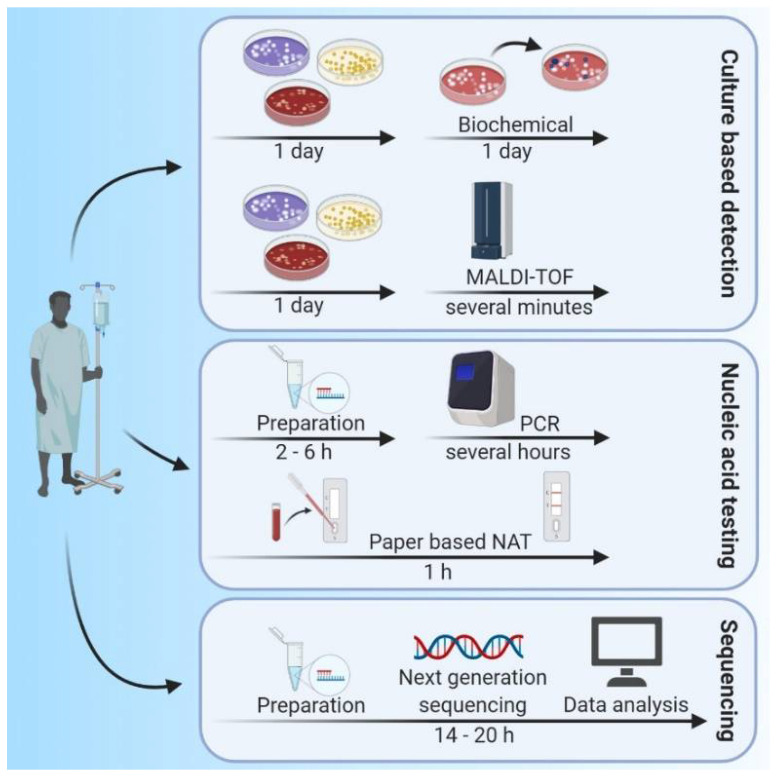Figure 1.
Typical timeframes required for techniques in current use for the diagnosis of bacterial infections. The classical cultivation of biological specimens, in combination with biochemical characterization, requires ~42 h as a minimum estimate. Replacement of biochemical methods with MALDI-TOF mass spectrometry (MS) reduces this timeframe significantly. The use of nucleic acid testing (NAT) bypasses the initial cultivation of clinical specimens, and thus reduces the timeframes to fewer than 4 h. However, NAT methods are sequence-dependent and involve only a limited number of primer-combinations; as such, these methods require a priori knowledge of the suspected pathogen(s). The use of NGS-based methods eliminates the need for any a priori knowledge of a suspected pathogen, although typical timeframes are increased.

